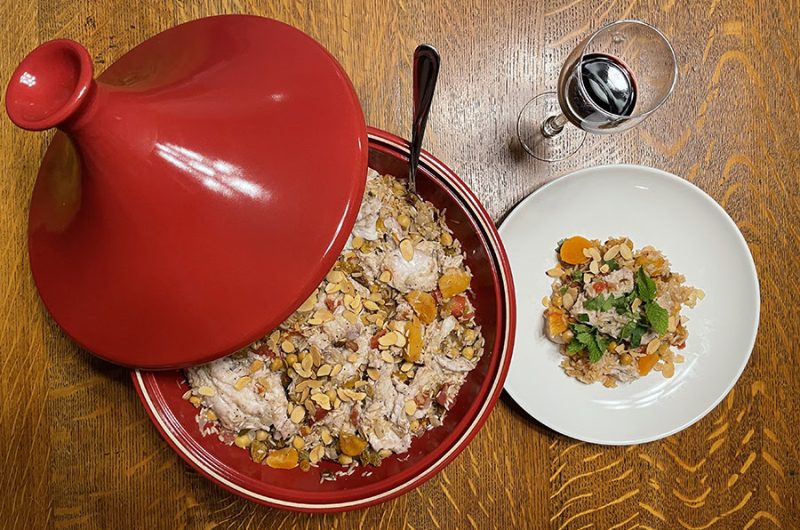
ABOUT THE ART
Jacques Callot, “Ste. Perpétue et Ste. Félicité, martyres (St. Perpetua and St. Felicita, Martyrs), March 7th, from ‘Les Images De Tous Les Saincts et Saintes de L’Année’ (Images of All of the Saints and Religious Events of the Year),” Les Images De Tous Les Saincts et Saintes de L’Année, etching; second state of two (Lieure), sheet: 2 9/16 x 1 15/16 in., (6.5 x 4.9 cm), Purchase, Joseph Pulitzer Bequest, 1917, New York. The Metropolitan Museum of Art.
St. Perpetua, St. Felicity, and their Companion Martyrs – March 7th
We learn about these saints in an early Christian writing called The Passion of St. Perpetua and Felicity from 203 AD. It is one of the first Christian books attributed to a woman, the well-educated Perpetua. From the North African city of Carthage, Perpetua was a rich noblewoman and Felicity was a slave. They both heard the call of Christ and left their pagan ways. Following Christ cost them a lot of relationships with their friends and families. Perpetua was recently married and was nursing an infant, while Felicity was expecting. They were both arrested by Rome for being Christians and sentenced to death. They were executed with a number of other Christian companions in the gladiator ring as a spectacle for the masses. The Romans unleashed bears, boars, leopards, and wild oxen upon them, and they sustained a lot of wounds. Finally, the gladiators were sent in to finish the job. The gladiator assigned to Perpetua was new to the job and did not know how to handle his sword, so in a mix of boldness and charity Perpetua helped place his sword at her neck.
The martyrs of Carthage have been particularly cherished by the church. Their witness is an example of such great strength and led to explosive church growth in North Africa. A noblewoman and a slave dying together as friends, they teach us that the Gospel of Christ destroys social barriers of status and gender and offers us a new idea of family and community.
To celebrate these North African saints, we are preparing a traditional Tagine with Fish and Rice. This dish is popular from Morocco to Tunisia (modern-day Carthage). A tagine is the name for both the slow-cooked meal and the odd-shaped terra-cotta pot in which it is traditionally cooked. The conical top and the thick clay walls produce amazingly flavorful and tender food. Tagines have become popular and are easy to find if you want to add a new pot to your kitchen. It also doubles as a beautiful serving dish. You can, however, approximate the effects of the tagine with a crockpot, pressure cooker, or even just a sauté pan with a tight lid. Tagines are perfect for coarse and lean meat, but we have chosen fish because of Carthage’s maritime dominance, and because it is Lenten friendly and amazingly delicious. May the bold and unique flavors of this dish help us all to remember that Christ has called us to be bold and unique as Christians living in this world.

Moroccan Tagine with Fish and Rice
Moroccan Tagine with Fish and Rice is a savory and aromatic dish that combines tender chunks of fish with fluffy rice and an array of spices, fruits, and vegetables. The dish is typically made in a tagine, a traditional Moroccan cooking vessel, but can also be prepared in a regular pot or Dutch oven.
Keep the screen of your device on
Ingredients
3 tablespoons 3 olive oil
1 cup 1 onion, chopped
4-5 4-5 cloves garlic, minced
1/2 cup 1/2 cilantro, chopped
2 tablespoons 2 fresh ginger, grated
2 teaspoons 2 ground cumin
1 teaspoon 1 ground coriander
1 teaspoon 1 ground cinnamon
1 1/2 cups 1 1/2 basmati or long grain rice
15 oz 15 can diced tomatoes
15 oz 15 can chickpeas, drained
3/4 cup 3/4 cup golden raisins
1/2 cup 1/2 cup dried apricots, halved
1 1 lemon, zested and juiced
1 1/2 cups 1 1/2 cups water
4-6 4-6 thin fish fillets (flounder, grouper, or snapper)
Salt and pepper, for seasoning
1/2 cup 1/2 sliced almonds, toasted
1/2 cup 1/2 fresh mint, chopped
1/4 cup 1/4 cilantro
Directions
- Place your tagine pot over medium/medium-low heat. (You could also use a large sauté pan with a tight lid if you don’t have a tagine.)
- Add 3 tbsp olive oil, 1 cup onions, 4-5 cloves garlic, ½ cup cilantro, and 2 tbsp fresh ginger to the tagine. Sauté for 7 – 8 minutes or until softened and fragrant.
- Add the 2 tsp cumin, 1 tsp coriander, 1 tsp cinnamon and 1 ½ cups basmati or long grain rice to the tagine. Stir and toast the spices and rice for 2-3 minutes.
- Add the 15 oz can diced tomatoes, 15 oz can chickpeas, ¾ cup golden raisins, ½ cup dried apricots, and the lemon zest and juice to the tagine. Season with 1 ½ teaspoons of salt. Mix well. Once mixed, spread evenly across the bottom of the pan. Pour 1 ½ cups water over the top.
- Place the lid on the tagine and cook for 15-20 minutes. Important: Do not lift the lid for at least 15 minutes.
- While the rice mixture is cooking, pat the fish fillets dry and season with salt and pepper on both side.
- Once the rice has cooked for at least 15 minutes, add the fish fillets over the top of the rice mixture and cover. Continue steaming until the fish has turned white and is cooked all the way through (10 – 15 minutes depending on the thickness of the fillets). Flip the fillets while cooking, if necessary.
- Once the fish is cooked, sprinkle with fresh mint, cilantro, and toasted almonds to garnish.